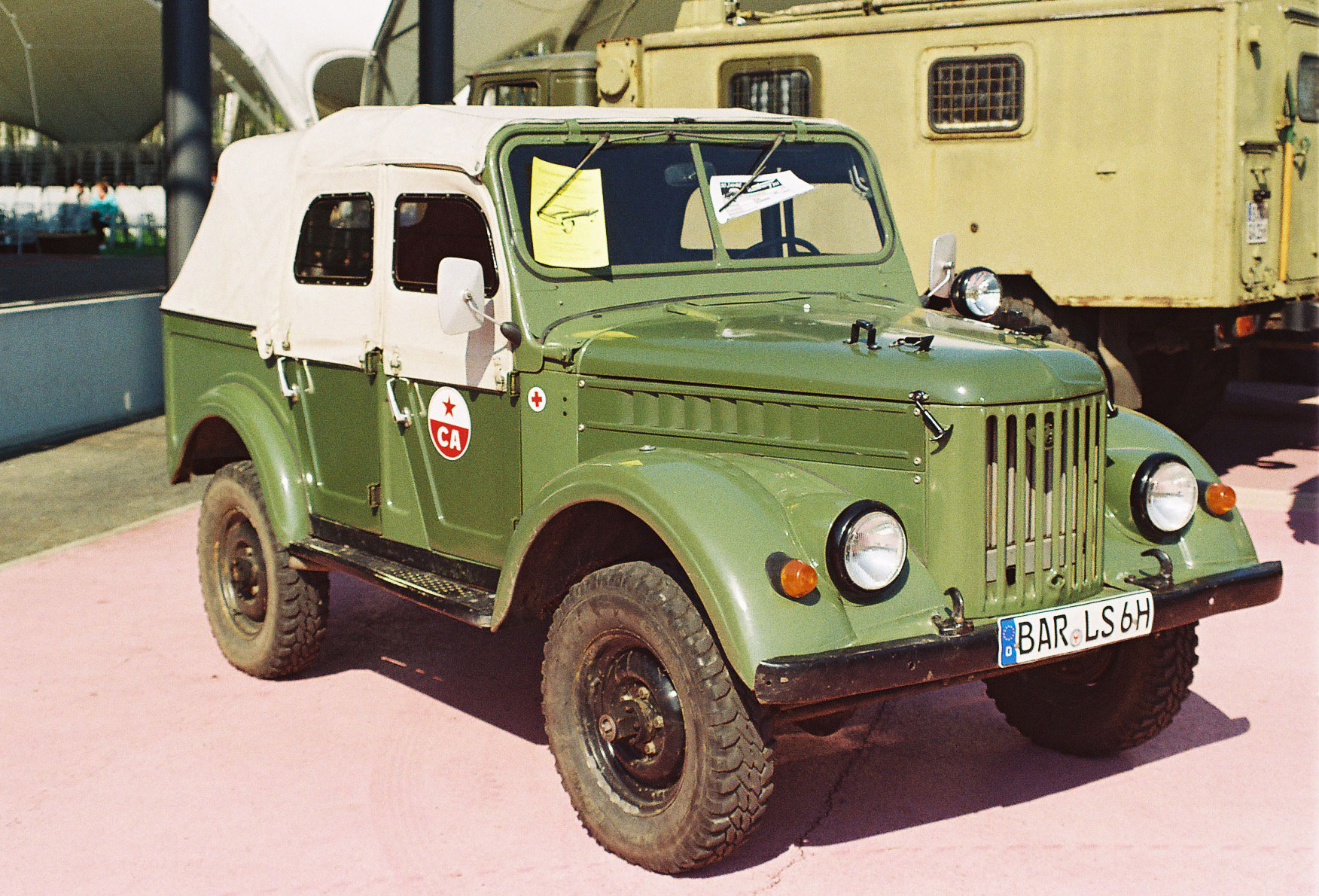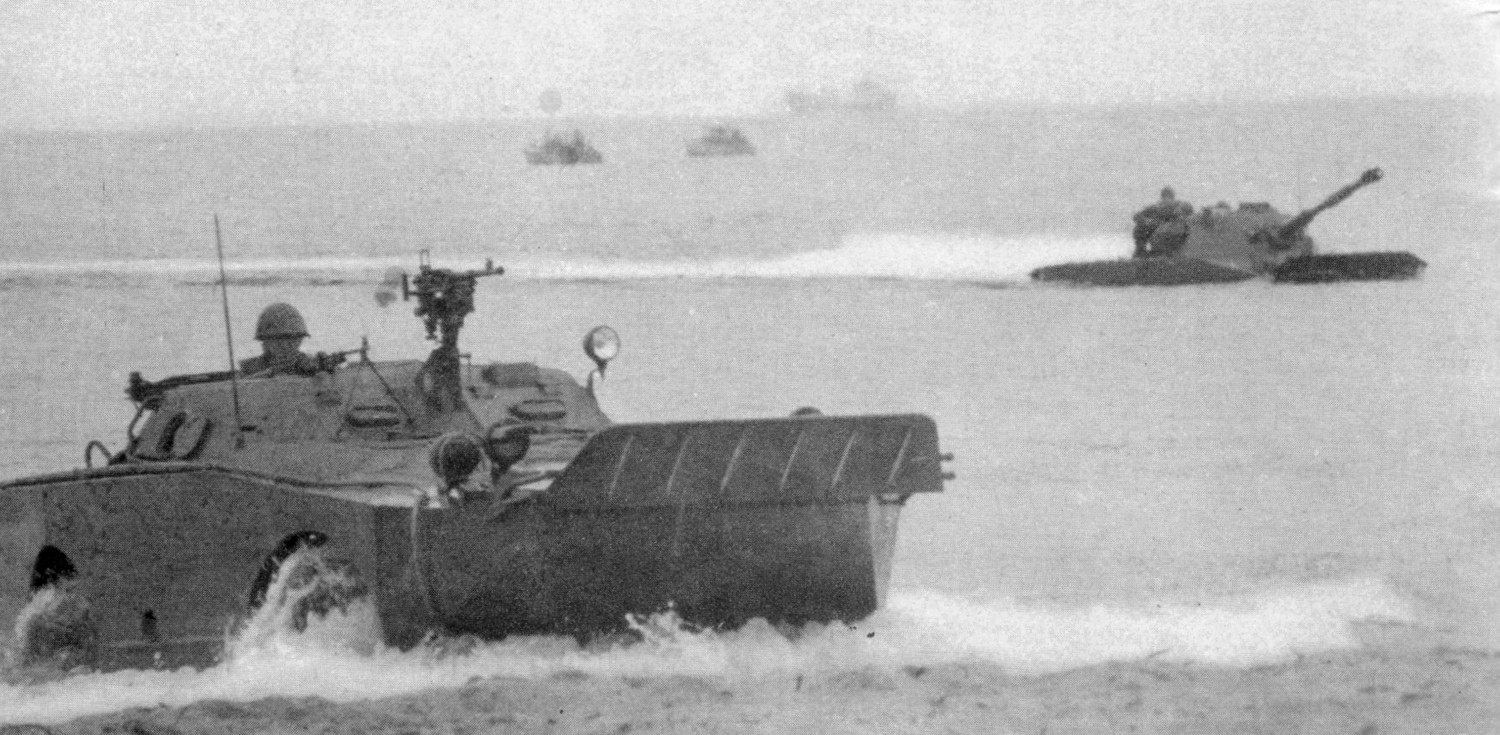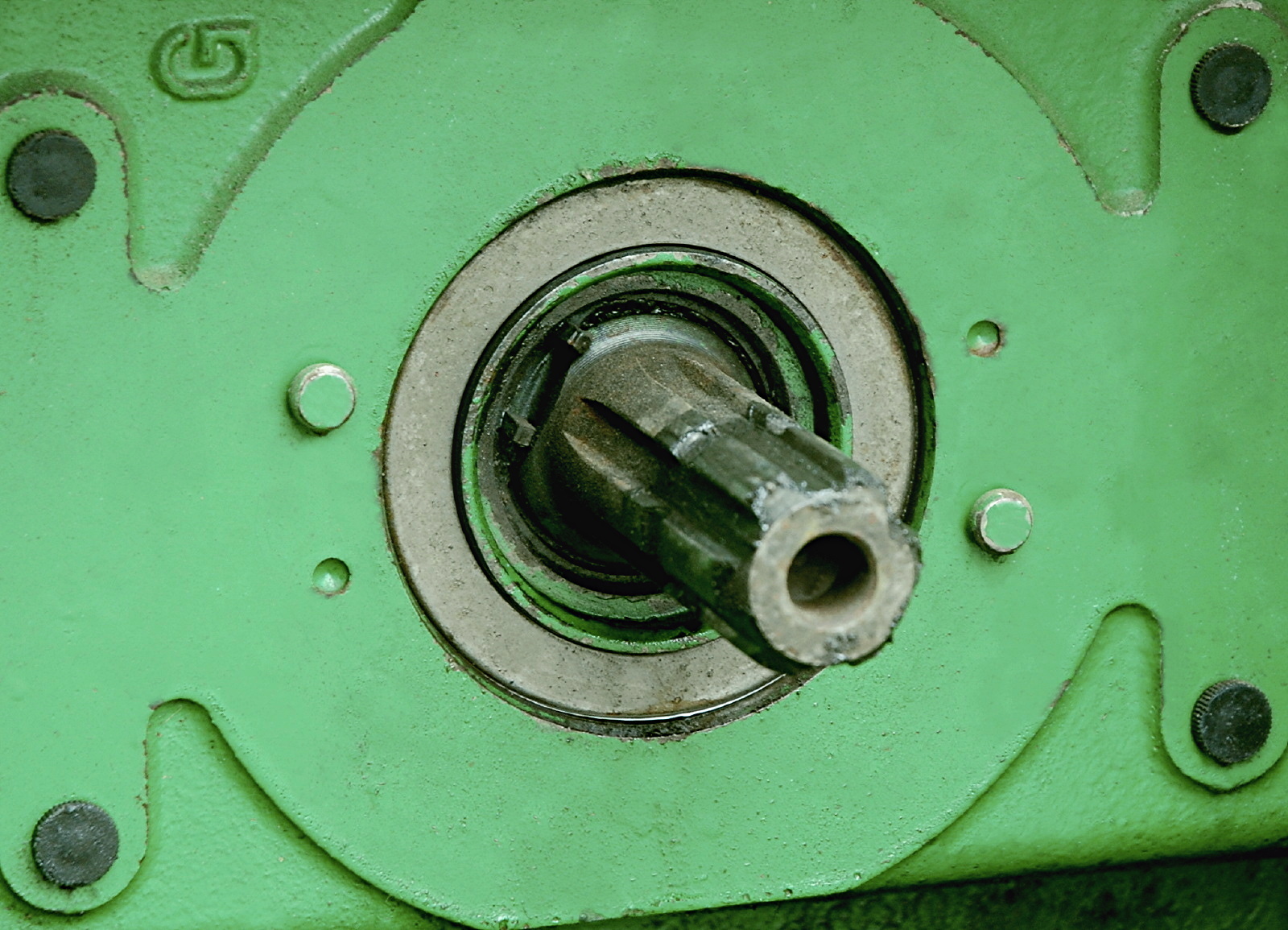|
GAZ-46
The GAZ-46, army designation MAV (Russian, малый автомобиль водоплавающий, ''small floating car''), is a Soviet-made light four-wheel drive amphibious military vehicle that entered service in the 1950s and has been used by many Eastern Bloc allied forces since. During the Second World War Canada, Britain and the US forwarded large quantities of military materials to Russia. Among those were jeeps, trucks, and amphibious vehicles like the 6×6 DUKW and the 4×4 Ford GPA. The latter were used to help men and equipment get across the many rivers of Eastern Europe and combat the Germans. Seeing merits of such vehicles, after the war, Russia decided to develop two similar vehicles, using domestic automotive parts, the BAV, an equivalent of the DUKW, and the MAV, an equivalent of the Ford GPA. Due to bad reception of the Ford GPA 'Seep' by Allied soldiers, most of them were routed to Russia under the US Lend-Lease program, before production was halted prema ... [...More Info...] [...Related Items...] OR: [Wikipedia] [Google] [Baidu] |
Ford GPA
The Ford GPA "Seep" (Government 'P' Amphibious, where 'P' stood for its 80-inch wheelbase), with supply catalog number G504, was an amphibious version of the World War II Ford GPW jeep. Design features of the much larger and successful DUKW amphibious 2-ton truck were used on the GPA, but unlike these and the jeep, the 'seep' was not a successful design. It was considered too slow and heavy on land, and lacked sufficient seagoing abilities in open water, due mainly to its low freeboard. The Soviet Union received roughly half of the total GPA production under Lend Lease, and were sufficiently satisfied with its ability to cross calmer inland waters, that they produced a copy, the GAZ-46. History and development After having commissioned Willys, Ford and Bantam to build the first 4,500 jeeps (1500 each) in March 1941, the US Motor Transport Board set up a project under the direction of the National Defense Research Committee (NDRC) to be designated "QMC-4 1/4 Ton Truck Light Am ... [...More Info...] [...Related Items...] OR: [Wikipedia] [Google] [Baidu] |
GAZ-69
The GAZ-69 is a four-wheel drive off-road vehicle produced by GAZ (ГАЗ, or ''Gorkovsky Avtomobilnyi Zavod'', Gorky Automobile Factory) between 1953 and 1956 and then by UAZ, in 1956–1972, though all of these light truck class vehicles were known as GAZ-69s. It was also produced in Romania until 1975.Thompson, Andy. ''Cars of the Soviet Union'' (Haynes Publishing, Somerset, UK, 2008), p. 70. Development and production The GAZ-69 was created by the team of chief designer Grigoriy Vasserman as a replacement for the GAZ-67B that would have lower fuel consumption than its predecessor and use the same inline four and three-speed transmission as the GAZ-M20 ''Pobeda''. The development process started in 1946 and the first prototypes known under the name "Truzhenik" (Toiler) were built in 1947. After extensive on-road testing, the new off-road vehicle went into production on August 25, 1953. Over 600,000 GAZ-69s had been built by the end of production in the USSR in 1972. a copy ... [...More Info...] [...Related Items...] OR: [Wikipedia] [Google] [Baidu] |
BAV 485
The ZIS-485, army designation BAV (Russian, БАВ, большой автомобиль водоплавающий - ''bolshoi avtomobil vodoplavayushchiy'', ''big floating vehicle''), is a Soviet amphibious transport, a copy of the WWII American DUKW. During World War II, the Soviets received 586 DUKW-353 amphibious trucks under the Lend-Lease Act.Prochko, Yevgeniy. ''«Bolshoi avtomobil vodoplavayushchiy»''. „Tekhnika i Vooruzheniye”. 03/2009. p. 15-22 (in Russian) The design was regarded as successful, so it was decided to build a similar domestic vehicle. Due to lack of own experience, the DUKW was copied, although with improvements enhancing its capability. The prototype was built in 1949 in ZIS subsidiary DAZ in Dnepropetrovsk, but a production started at ZIS factory, as ZIS-485. Introduced in 1952,Hogg & Weeks, p.308, "BAV-485". it was intended to complement the GAZ-46 4x4 amphibious reconnaissance vehicle, but using the ZIS-151 6x6 truck (also used in the BTR-152) a ... [...More Info...] [...Related Items...] OR: [Wikipedia] [Google] [Baidu] |
Amphibious Vehicle
An amphibious vehicle (or simply amphibian), is a vehicle that is a means of transport viable on land as well as on or under water. Amphibious vehicles include amphibious bicycles, ATVs, cars, buses, trucks, railway vehicles, combat vehicles and hovercraft. Classic landing craft are not amphibious vehicles as they do not offer any real land transportation at all, although they are part of amphibious warfare. Ground effect vehicles, such as ''ekranoplans'', will likely crash on any but the flattest of landmasses so are also not considered to be amphibious vehicles. General technical notes Apart from the distinction in sizes mentioned above, two main categories of amphibious vehicles are immediately apparent: those that travel on an air-cushion ( Hovercraft) and those that do not. Amongst the latter, many designs were prompted by the desire to expand the off-road capabilities of land-vehicles to an "all-terrain" ability, in some cases not only focused on creating a tr ... [...More Info...] [...Related Items...] OR: [Wikipedia] [Google] [Baidu] |
Volkswagen Schwimmwagen
The Volkswagen ''Schwimmwagen'' (literally "swimming car") was a four-wheel drive amphibious vehicle, used extensively by German ground forces during the Second World War. The ''Schwimmwagen'' is the most-produced amphibious car in history. Prototyped as the Type 128, it entered full-scale production as the Type 166 in 1941 for the '' Wehrmacht''. Development Volkswagen Schwimmwagens used the engine and mechanicals of the VW Type 86 four-wheel drive prototype of the Kübelwagen and the Type 87 four-wheel drive 'Kübel/Beetle' Command Car, which in turn were based on the platform of the civilian Volkswagen Beetle. Erwin Komenda, Ferdinand Porsche's first car-body designer, was forced to develop an all-new unitized bodytub structure since the flat floorpan chassis of the existing VW vehicles was unsuited to smooth movement through water. Komenda patented his ideas for the swimming car at the German Patent office. The earliest Type 128 prototype was based on the full-leng ... [...More Info...] [...Related Items...] OR: [Wikipedia] [Google] [Baidu] |
Willys MB
The Willys MB and the Ford GPW, both formally called the U.S. Army Truck, -ton, 4×4, Command Reconnaissance, commonly known as the Willys Jeep, Jeep, or jeep, and sometimes referred to by its List of U.S. military vehicles by supply catalog designation#G500 to G599, supply catalogue designation G503,According to its United States Army Ordnance Corps Supply Catalog designation, 'G-number', or SNL nr. — a group number for ordering parts, based on a List of U.S. Army weapons by supply catalog designation, Standard Nomenclature List. were highly successful American Off-road vehicle, off-road capable Military light utility vehicle, light military utility vehicles, built in large numbers to a single standardized design, for the United States and the Allies of World War II, Allied forces in World War II, World War II from 1941 until 1945. The jeep became the primary light-wheeled multi-role vehicle of the United States military and its allies, with President Eisenhower once c ... [...More Info...] [...Related Items...] OR: [Wikipedia] [Google] [Baidu] |
DUKW
The DUKW (colloquially known as Duck) is a six-wheel-drive amphibious modification of the -ton CCKW trucks used by the U.S. military during World War II and the Korean War. Designed by a partnership under military auspices of Sparkman & Stephens and General Motors Corporation (GMC), the DUKW was used for the transportation of goods and troops over land and water. Excelling at approaching and crossing beaches in amphibious warfare attacks, it was intended only to last long enough to meet the demands of combat. Surviving DUKWs have since found popularity as tourist craft in marine environments. Etymology The name DUKW comes from General Motors Corporation model nomenclature: * D, 1942 production series * U, Utility * K, front wheel drive * W, tandem rear axles, both driven Decades later, the designation was explained erroneously by writers such as Donald Clarke, who wrote in 1978 that it was an initialism for "Duplex Universal Karrier, Wheeled". The U.S. Navy-Marine Corps a ... [...More Info...] [...Related Items...] OR: [Wikipedia] [Google] [Baidu] |
BRDM-1
The BRDM-1 (''Bronirovannaya Razvedyvatelnaya Dozornaya Mashina'', Бронированная Разведывательная Дозорная Машина, literally "armored reconnaissance/patrol vehicle") is a Soviet amphibious armored scout car. It was the first purpose-built Soviet reconnaissance vehicle to enter service since the BA-64 and was built on the chassis and drive train of the BTR-40 armored personnel carrier. It is the world's first mass-produced combat vehicle of its class. The primary advantage of the BRDM-1 at the time of its introduction was its amphibious capability, which was the main shortcoming associated with its BTR-40 counterpart. Another unique feature of the vehicle's design were two pairs of chain-driven auxiliary wheels, which could be lowered to provide additional traction on muddy terrain. The BRDM-1 was manufactured from 1957 to 1966, at which time 10,000 had entered service with the Soviet Union and its military allies around the world. It was t ... [...More Info...] [...Related Items...] OR: [Wikipedia] [Google] [Baidu] |
Military Vehicles Of The Soviet Union
A military, also known collectively as armed forces, is a heavily armed, highly organized force primarily intended for warfare. It is typically authorized and maintained by a sovereign state, with its members identifiable by their distinct military uniform. It may consist of one or more military branches such as an army, navy, air force, space force, marines, or coast guard. The main task of the military is usually defined as defence of the state and its interests against external armed threats. In broad usage, the terms ''armed forces'' and ''military'' are often treated as synonymous, although in technical usage a distinction is sometimes made in which a country's armed forces may include both its military and other paramilitary forces. There are various forms of irregular military forces, not belonging to a recognized state; though they share many attributes with regular military forces, they are less often referred to as simply ''military''. A nation's military may f ... [...More Info...] [...Related Items...] OR: [Wikipedia] [Google] [Baidu] |
Amphibious Military Vehicles
Amphibious means able to use either land or water. In particular it may refer to: Animals * Amphibian, a vertebrate animal of the class Amphibia (many of which live on land and breed in water) * Amphibious caterpillar * Amphibious fish, a fish that is able to leave water for extended periods of time * Amphibious insect, an insect which lives in the air or on land and breeds in water * Amphibious rat (other) * ''Scolopendra cataracta'', a species of amphibious centipede Arts and media * ''Amphibious'' (2010 film), a thriller film * ''Amphibious'' (2020 film), a drama film * Amphibius (comics), a minor comic book character Technology * Amphibious aircraft, an aircraft capable of landing on either water or land * Amphibious vehicle, a vehicle capable of being driven on both land and water * Amphibious warfare Amphibious warfare is a type of offensive military operation that today uses naval ships to project ground and air power onto a hostile or potentially ... [...More Info...] [...Related Items...] OR: [Wikipedia] [Google] [Baidu] |
Indiana Jones And The Kingdom Of The Crystal Skull
''Indiana Jones and the Kingdom of the Crystal Skull'' is a 2008 American action-adventure film directed by Steven Spielberg and the fourth installment in the ''Indiana Jones'' series. Released and taking place 19 years after the previous film, it is set in 1957, pitting Indiana Jones (Harrison Ford) against Soviet KGB agents led by Irina Spalko (Cate Blanchett)—searching for a telepathic crystal skull. Jones is aided by his former lover, Marion Ravenwood ( Karen Allen), and their son, Mutt Williams ( Shia LaBeouf). Ray Winstone, John Hurt, and Jim Broadbent are also part of the supporting cast. Screenwriters Jeb Stuart, Jeffrey Boam, Frank Darabont, George Lucas and Jeff Nathanson wrote drafts before David Koepp's script satisfied the producers. The filmmakers intended to pay tribute to the science fiction B-movies of the 1950s era. Shooting began on June 18, 2007, at various locations in New Mexico, New Haven, Connecticut, Hawaii, and Fresno, California, as w ... [...More Info...] [...Related Items...] OR: [Wikipedia] [Google] [Baidu] |
Power Take-off
A power take-off or power takeoff (PTO) is one of several methods for taking power from a power source, such as a running engine, and transmitting it to an application such as an attached implement or separate machine. Most commonly, it is a splined drive shaft installed on a tractor or truck allowing implements with mating fittings to be powered directly by the engine. Semi-permanently mounted power take-offs can also be found on industrial and marine engines. These applications typically use a drive shaft and bolted joint to transmit power to a secondary implement or accessory. In the case of a marine application, such shafts may be used to power fire pumps. In aircraft applications, such an accessory drive may be used in conjunction with a constant speed drive. Jet aircraft have four types of PTO units: internal gearbox, external gearbox, radial drive shaft, and bleed air, which are used to power engine accessories. In some cases, aircraft power take-off systems also provid ... [...More Info...] [...Related Items...] OR: [Wikipedia] [Google] [Baidu] |
.jpg)


.jpg)



